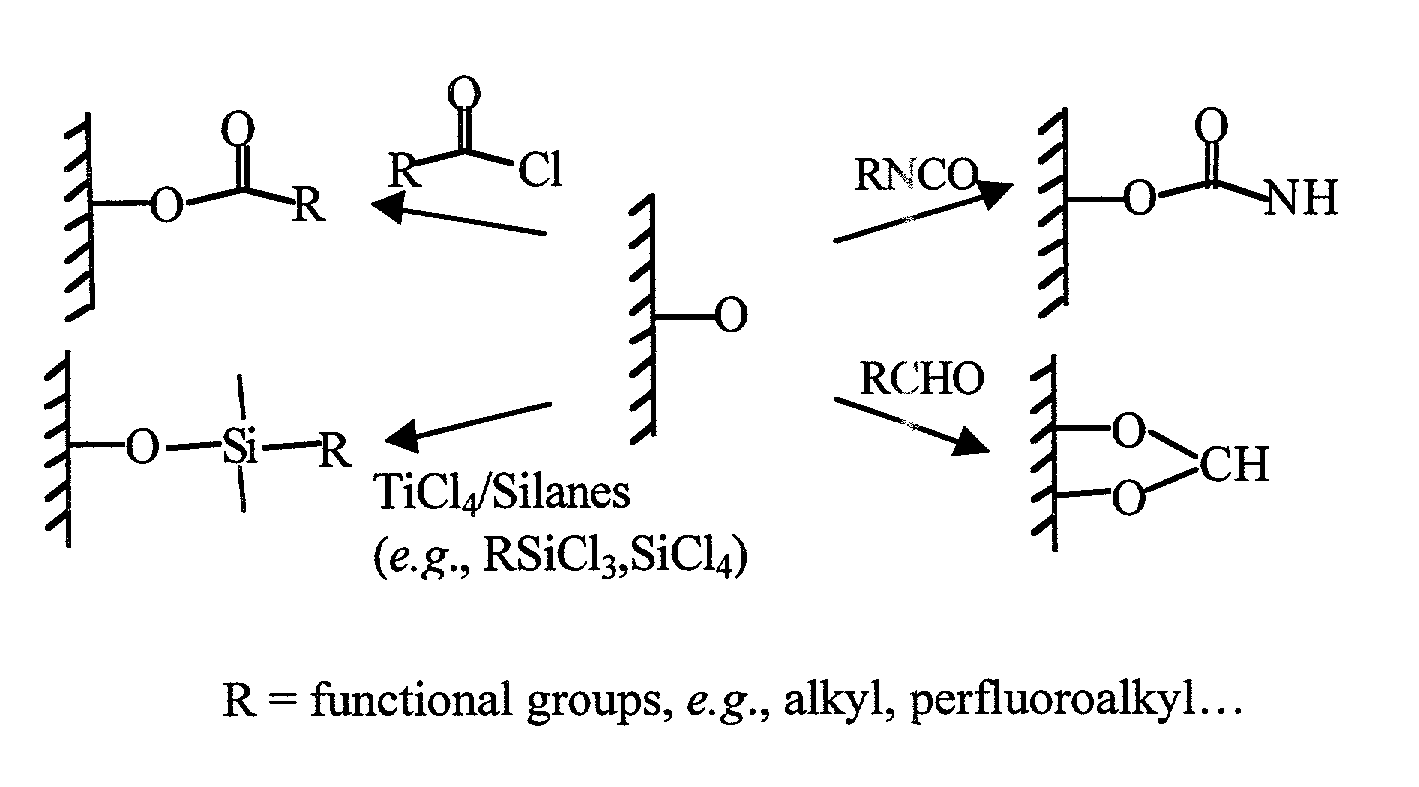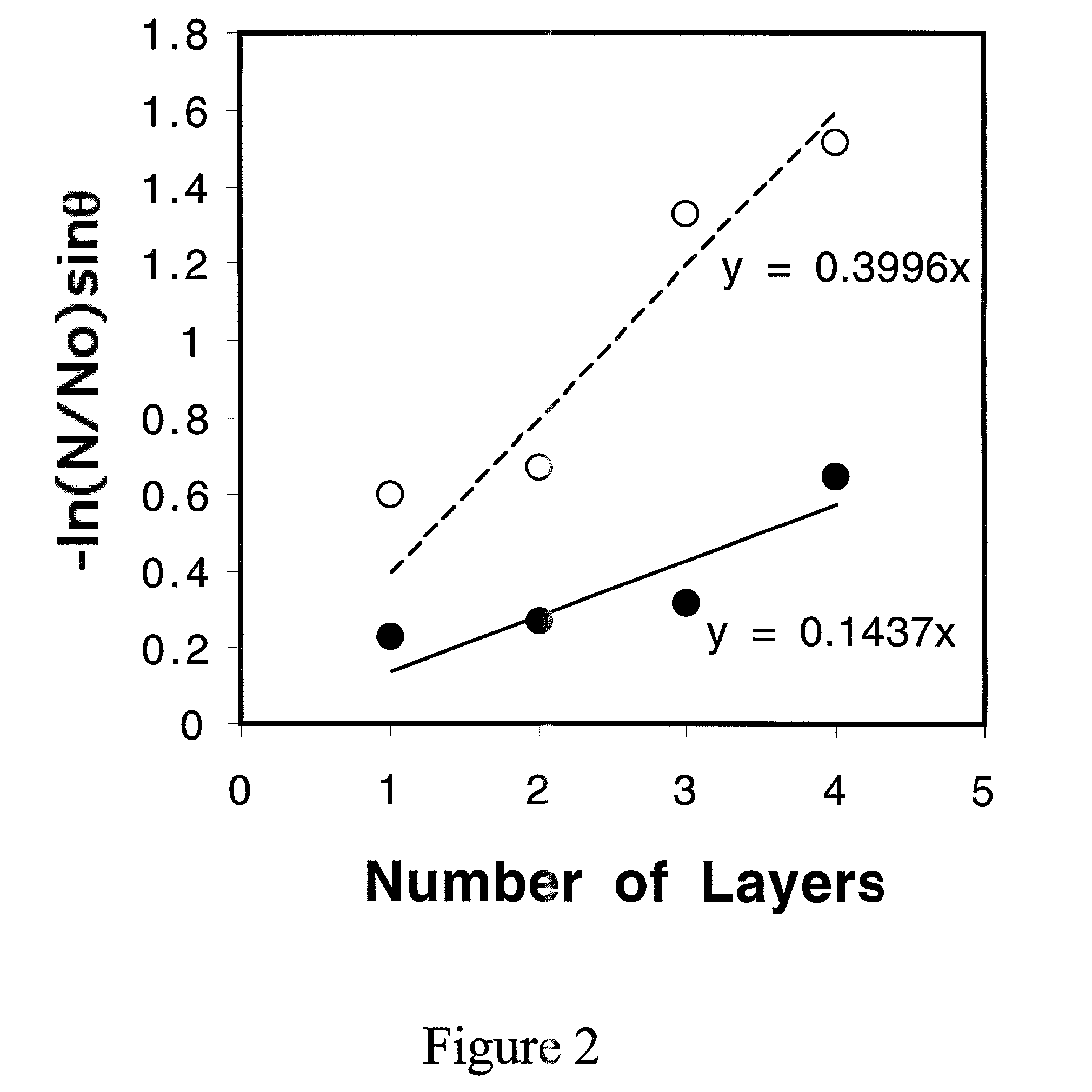Surface modification of solid phase objects by poly(vinyl alcohol)
a surface modification and hydrophobic solid phase technology, applied in the direction of thin material processing, coating, nanotechnology, etc., can solve the problems of cfsub>2, treatment film does not have a significant shelf life, and plasma chemical treatment is very expensive, so as to improve wettability, adhesion, and performance characteristics
- Summary
- Abstract
- Description
- Claims
- Application Information
AI Technical Summary
Benefits of technology
Problems solved by technology
Method used
Image
Examples
example 1
[0028]In order to provide a reference, a PVOH film on a non-reactive, rigid substrate was male. PVOH (Mw=108,000) was dissolved in purified water in a glass vial for approximately 1 h while stirring and heating to about 100° C. The solution was left to cool to room temperature, then made to 0.5 M (based on repeat units). This solution was used to cast a PVOH film on a glass slide. Water contact angles of the cast film after drying at reduced pressure overnight were θA / θR=63 ° / 17°.
example 2
[0029]In order to determine the effects of PVOH concentration on adsorption, PVOH (Mw=108,000) solutions of 0.005 M, 0.01 M, 0.05 M, 0.1 M, and 0.5 M were prepared. FEP films were immersed in these solutions for 89 h at room temperature. These FEP-PVOH samples displayed indistinguishable water contact angles, θA / θR =65°±3° / 18°±3°, which in turn are indistinguishable from those of the solution-cast reference PVOH film (θA / θR=63°17°). The contact angles of virgin FEP are θA / θR=117° / 93°.
[0030]This indicates that the thickness of the adsorbed PVOH reaches at least the sampling depth of contact angle, which is on the order of a few Å. O / F ratios obtained from XPS (at 15° takeoff angle) were 1.06, 1.14, 1.07, 1.01 and 4.21, respectively, for the different concentrations. This trend indicates that the adsorbed amount is independent of concentration except at the highest concentration studied and that high PVOH concentrations yield relatively thick adsorption layers.
[0031]
TABLE 1XPS Atomic ...
example 3
[0032]In order to determine the kinetics of the adsorption process, FEP films were left in 0.01 M PVOH (Mw=108,000) solution for 10 min 30 min, 1 h, 2 h, 5 h, 24 h, 89 h, and 100 h. FIG. 1 shows the O / F ratios obtained from XPS at 15° takeoff angle as a function of adsorption time. O / F increased and reached a plateau after 24 h adsorption time. Water contact angle data are consistent with this finding. XPS atomic composition (15° takeoff angle) and contact angle data of an FEP sample analyzed after adsorption in 0.01 M PVOH for 24 h are given in the fourth entry of Table 1.
PUM
| Property | Measurement | Unit |
|---|---|---|
| temperature | aaaaa | aaaaa |
| takeoff angle | aaaaa | aaaaa |
| takeoff angles | aaaaa | aaaaa |
Abstract
Description
Claims
Application Information
 Login to View More
Login to View More - R&D
- Intellectual Property
- Life Sciences
- Materials
- Tech Scout
- Unparalleled Data Quality
- Higher Quality Content
- 60% Fewer Hallucinations
Browse by: Latest US Patents, China's latest patents, Technical Efficacy Thesaurus, Application Domain, Technology Topic, Popular Technical Reports.
© 2025 PatSnap. All rights reserved.Legal|Privacy policy|Modern Slavery Act Transparency Statement|Sitemap|About US| Contact US: help@patsnap.com



